Propiconazole effectively treats rice grain rot by killing the fungus that causes the disease, protecting rice panicles, increasing yield and grain quality after harvest.
Grain discoloration is one of the biggest concerns for rice farmers during each cropping season. Even when rice flowers uniformly and the panicles look healthy, just one prolonged rain or unusually high humidity can suddenly trigger a severe outbreak, potentially leading to significant crop loss. This disease not only causes shriveled, lightweight grains but also severely reduces rice quality and post-harvest market value.
Among the current control solutions, Propiconazole has emerged as one of the top-performing active ingredients against grain discoloration due to its powerful antifungal action, deep penetration, and ability to protect rice panicles from within. So what exactly is Propiconazole, how should it be used, and is it truly effective in managing this disease? Let’s explore in detail with Sataka below.
Grain discoloration is one of the most serious diseases affecting rice, directly impacting both yield and grain quality. It typically manifests as shriveled, underdeveloped grains, with damaged or blackened embryos, reducing the proportion of whole grains and overall commercial value. In many key rice-producing areas, the infection rate can reach 20–30% if not properly managed.
The main cause of grain discoloration is the invasion of fungi and bacteria into rice panicles during the flowering and grain-filling stages—critical and sensitive phases for the plant. Unfavorable weather conditions such as persistent rain, high humidity, and waterlogging create ideal environments for disease development.
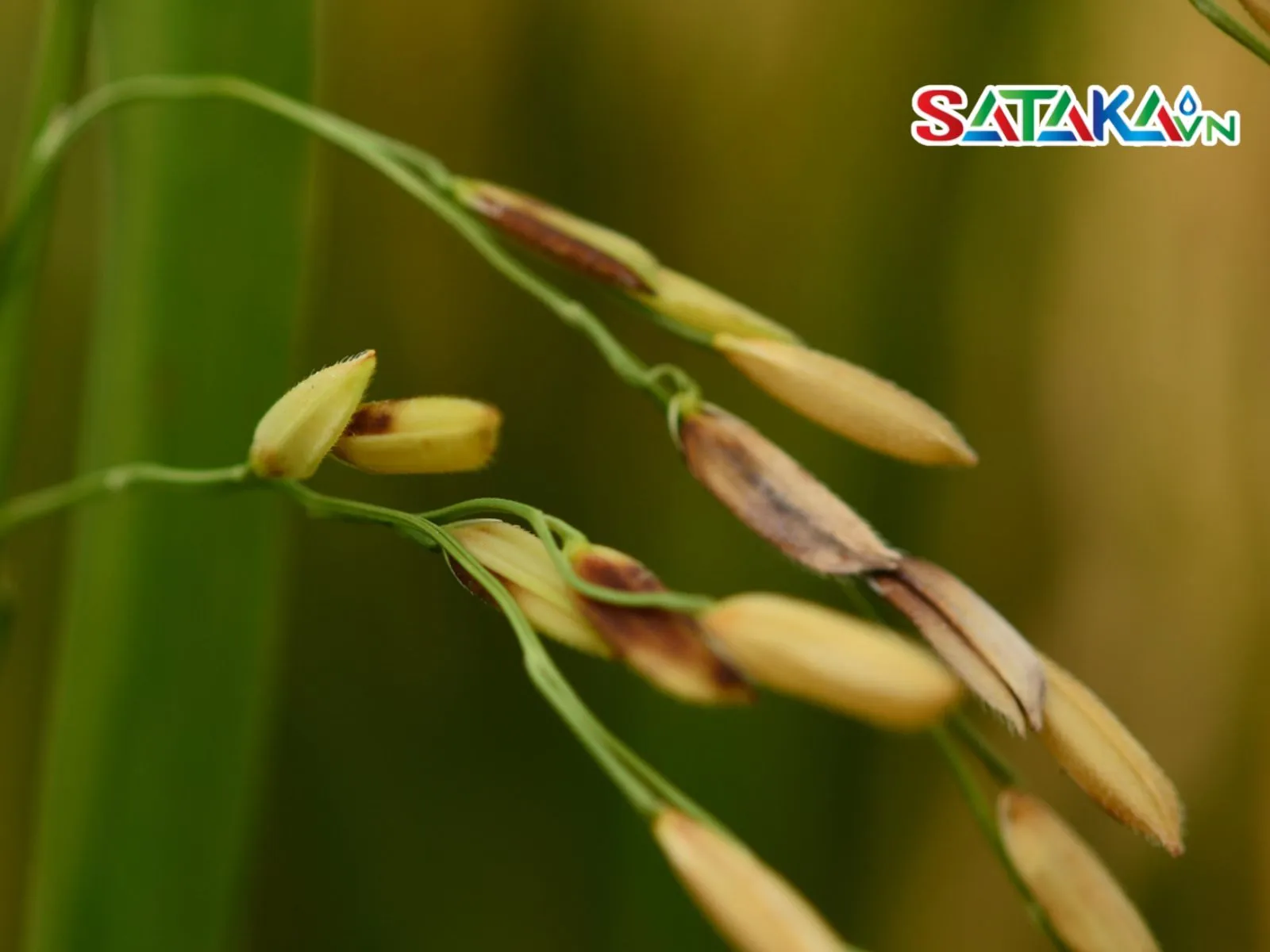
Rice grain sterility
The primary pathogens responsible for grain discoloration include fungi such as Fusarium spp., Pyricularia oryzae, Curvularia spp., and bacteria like Xanthomonas oryzae. Among these, fungal infections are the leading cause of blackened, dry grains that severely degrade rice quality.
Disease development starts when fungal spores spread via wind, water, or crop residues and attach to rice flowers during blooming. Under high humidity, the spores germinate, penetrate the protective husk, and develop within the grain, destroying the embryo and preventing normal grain formation.
Additionally, the use of disease-susceptible rice varieties, excessive nitrogen fertilization, dense planting, and poor crop rotation practices can further aggravate the disease.
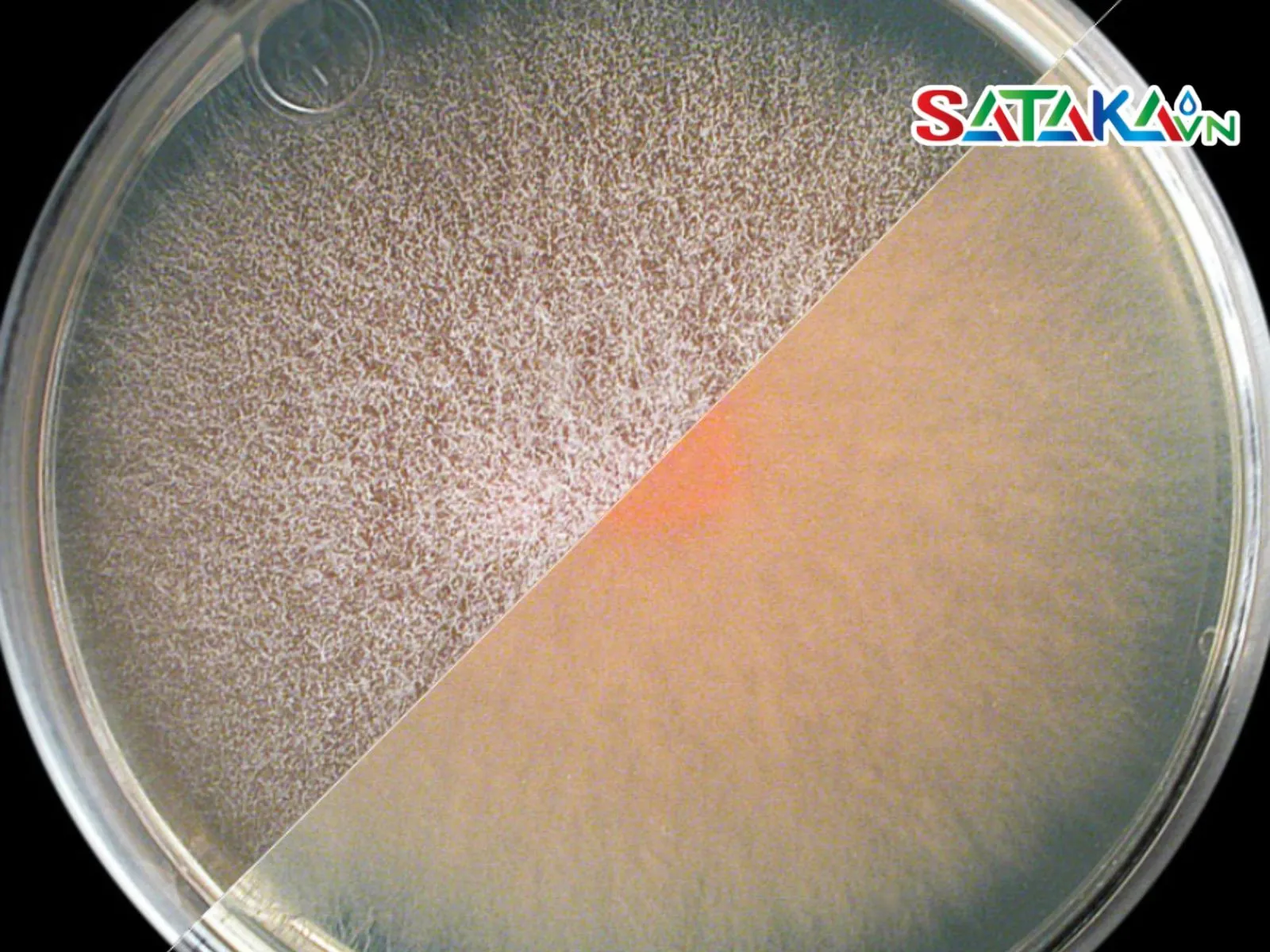
Fusarium spp.
Propiconazole is a broad-spectrum fungicide belonging to the triazole group, widely used in agriculture to prevent and treat various crop diseases. It works by inhibiting the synthesis of ergosterol—a vital component of fungal cell membranes—thereby killing and halting the growth of pathogenic fungi.
This compound is known for its strong systemic and translaminar movement, effectively protecting plant tissues from fungal invasion. In rice farming, Propiconazole is highly valued for its efficacy against diseases like sheath blight, panicle blast, and particularly fungal-induced grain discoloration.
![]()
Active ingredient Propiconazole
When sprayed on rice plants, Propiconazole quickly penetrates the tissue and moves to other parts, including flowers and developing grains. There, it eliminates fungal spores at early stages—either during germination or initial infection—thereby preventing the disease before it can take hold. This early intervention helps protect rice panicles and significantly reduces the proportion of shriveled grains.
Moreover, thanks to its broad-spectrum activity, Propiconazole also suppresses other fungal diseases, lowering the overall disease burden on the crop and allowing rice to develop uniformly. Unlike some contact-only fungicides, Propiconazole is systemic and rainfast, meaning it remains effective even if it rains after spraying.
Field trials and research have shown that timely application of Propiconazole can reduce grain discoloration rates by over 70%, significantly increasing yield and improving grain quality.
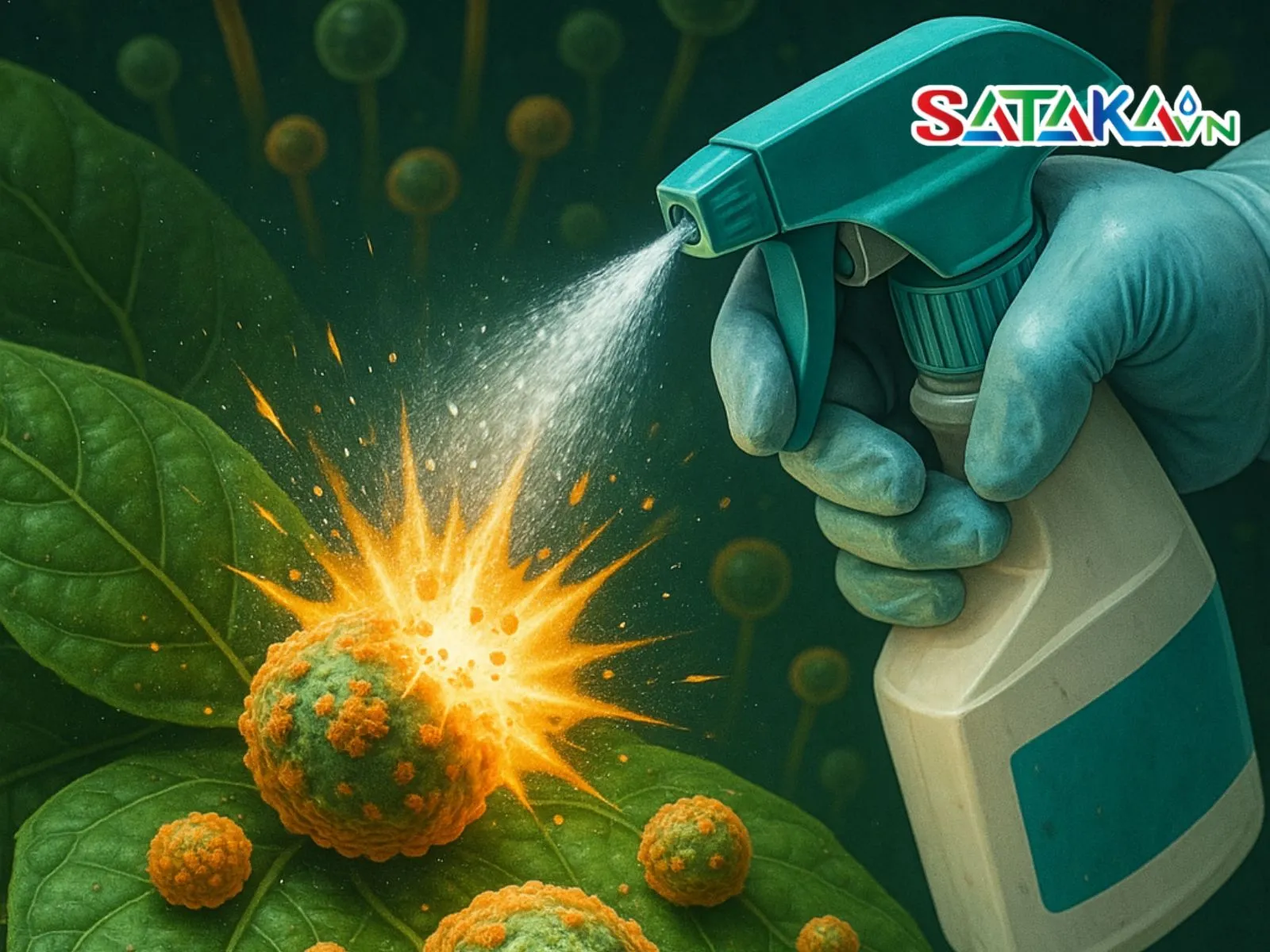
Destroy fungal diseases
To maximize Propiconazole’s effectiveness, farmers should strictly follow dosage and application timing:
First spray: At full heading (70–80% of panicles emerged).
Second spray: 7–10 days after the first, especially if wet conditions persist or symptoms appear.
To avoid resistance, alternate Propiconazole with other fungicides with different modes of action. In severe cases, combine with products containing Difenoconazole, Azoxystrobin, or Kasugamycin for bacterial co-infections.
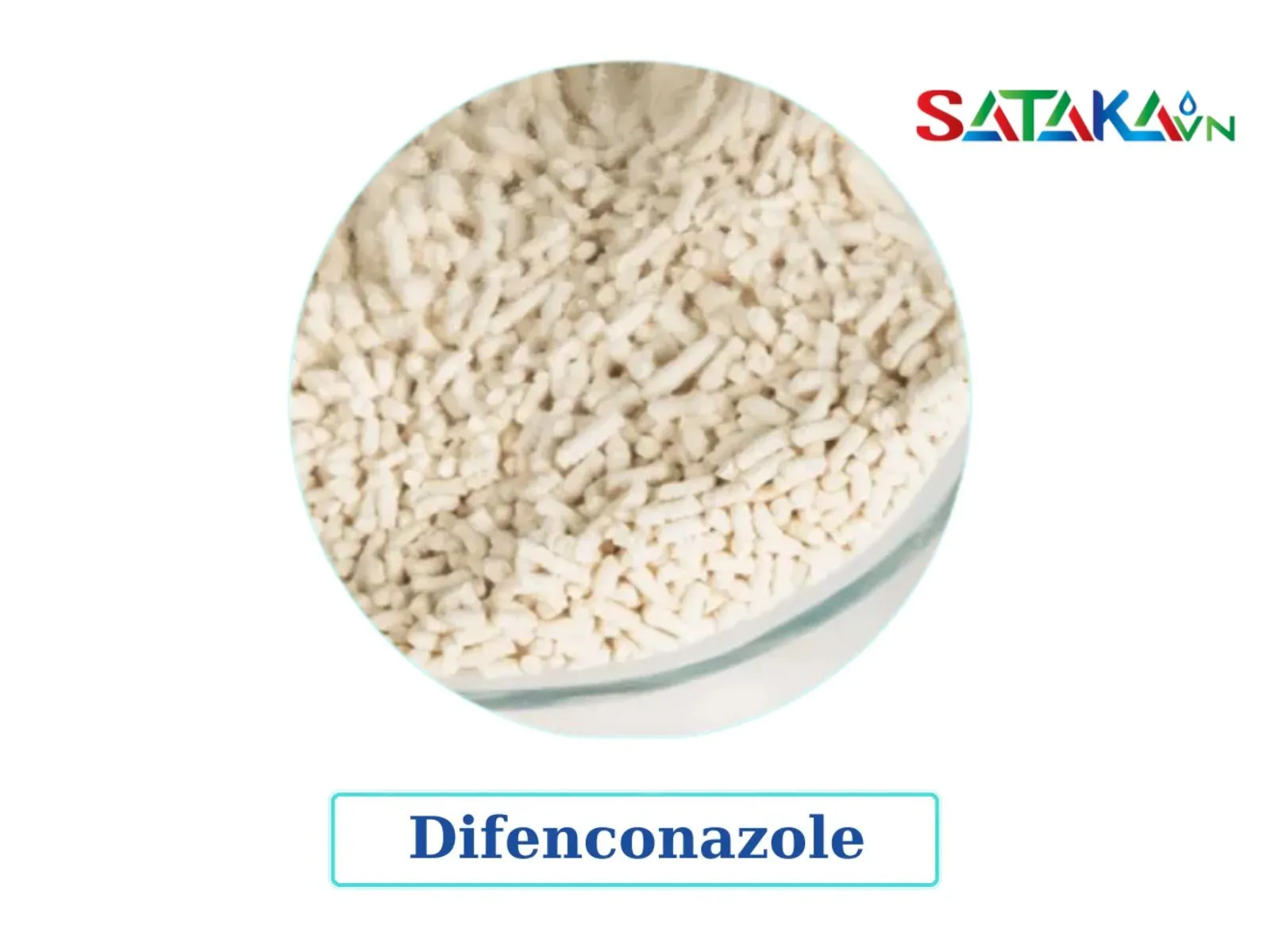
Can be combined with active ingredient Difenoconazole
Compared to other fungicides, Propiconazole offers several outstanding benefits:
These advantages explain why many agricultural experts and farmers rely on Propiconazole during critical crop stages like heading and grain filling.

Safe for plants
To ensure safe and effective use of Propiconazole, farmers should keep in mind:
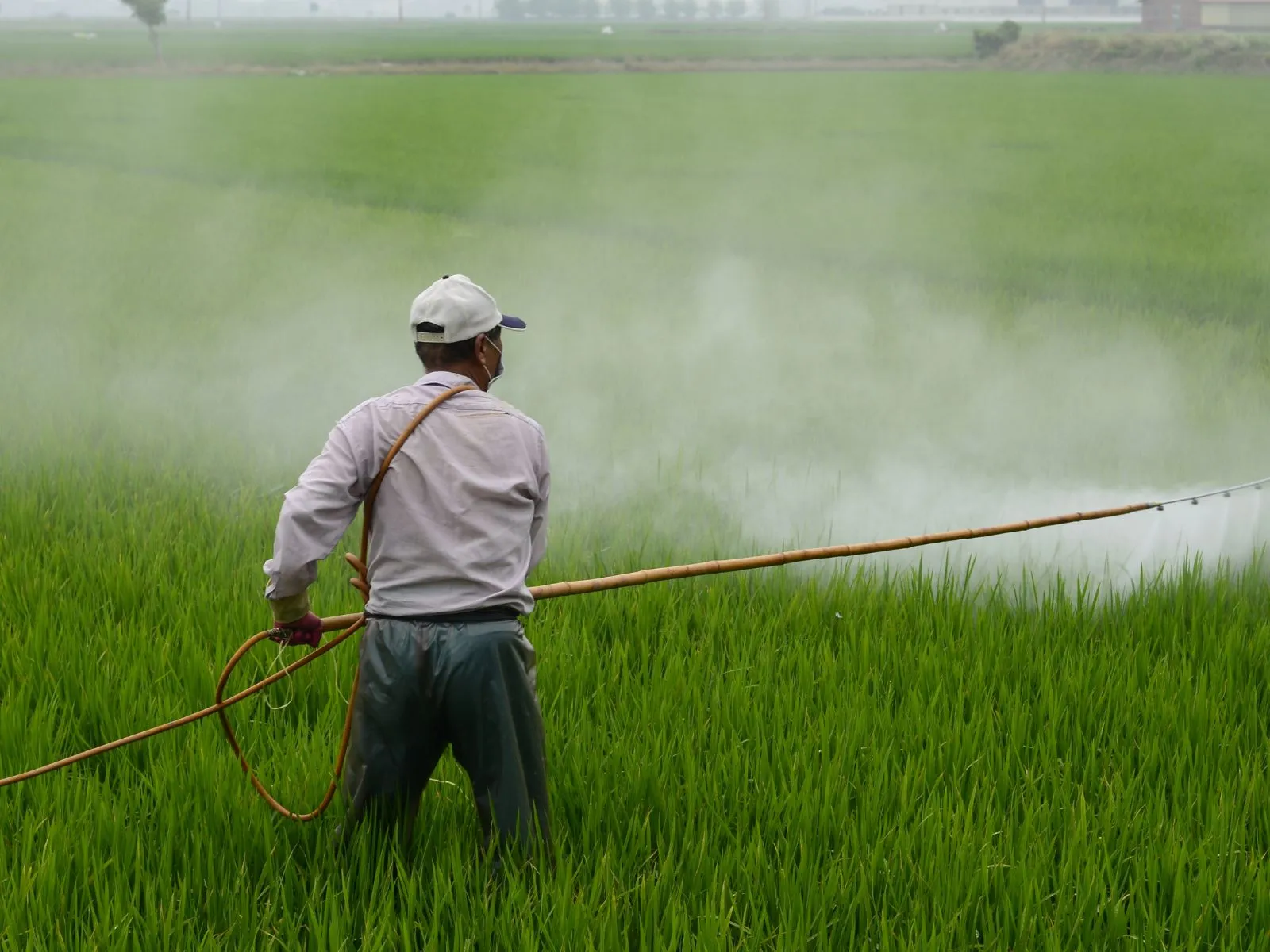
Spraying should be done in the cool afternoon.
Even though each season carries risks, with the right solution, farmers can confidently protect their rice yields. Propiconazole is not only highly effective against grain discoloration but also enhances grain quality, contributing to better harvest outcomes.
If you're looking for genuine Propiconazole products that are safe, effective, and affordably priced, visit Sataka.com.vn – your trusted source for high-quality active ingredients manufactured and distributed by reputable factories across Vietnam.